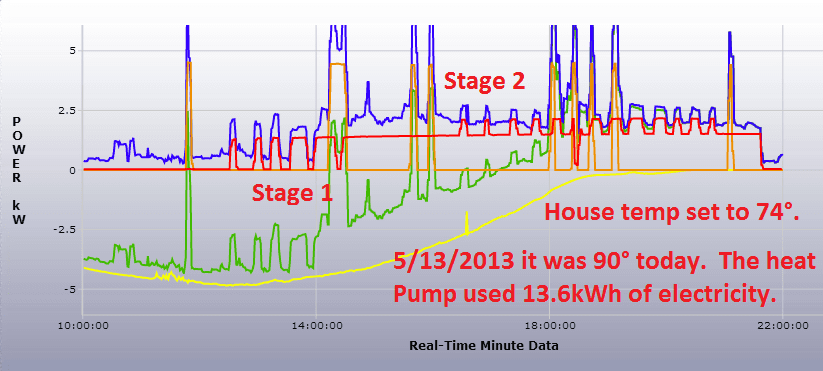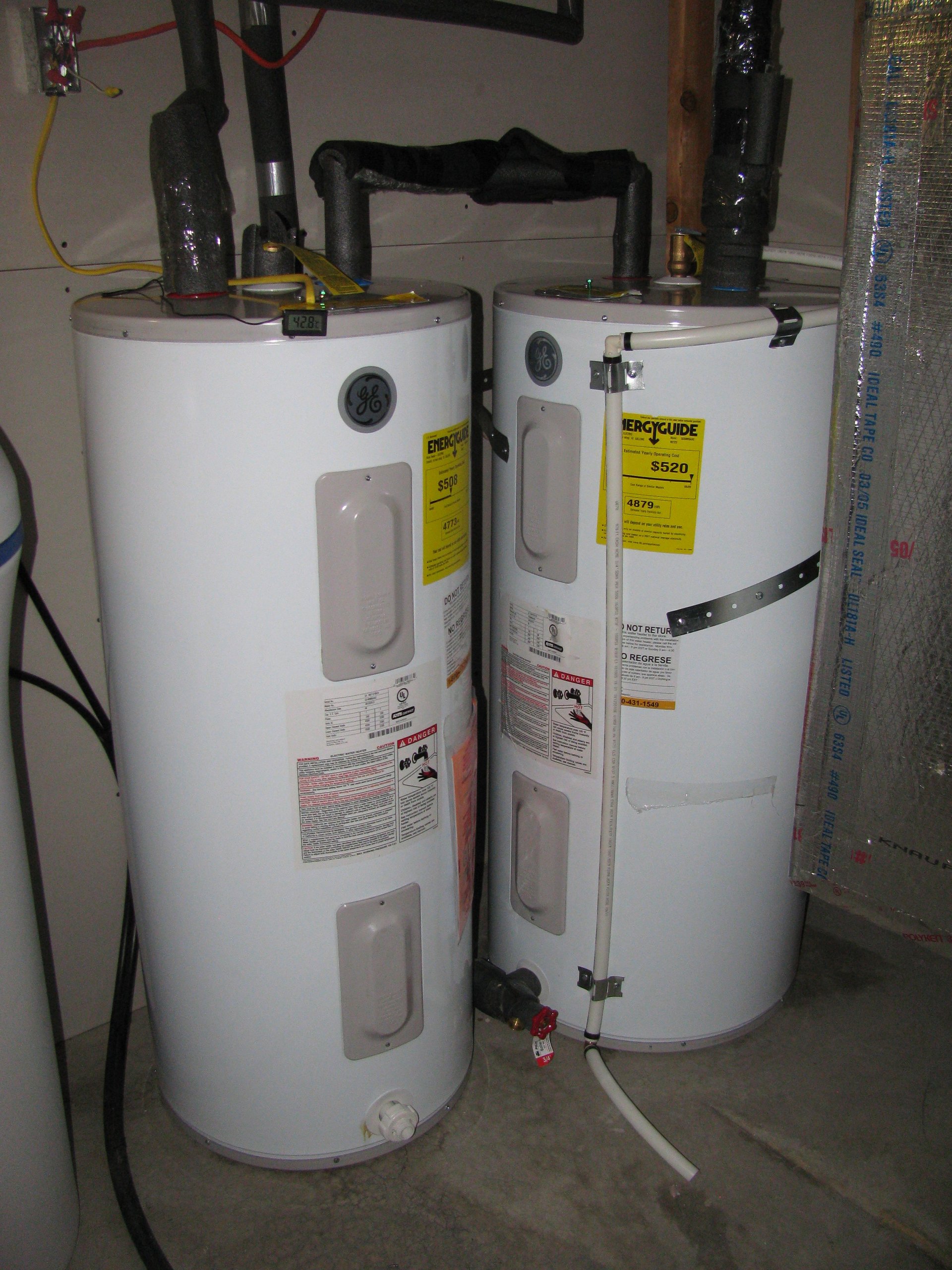Published Monday July 15, 2013: Updated November 1, 2013
Geothermal 3 Months Later
May 18, 2013 marked 3-months since we had the ground-loop heat pump installed in our house. During that time, we have experienced the tail end of cold weather winter temperatures, some mild spring weather and even some record breaking high temperature days in the mid 90’s.
All the while, the house remained consistently comfortable. When the compressor inside the heat pump turns on, it is almost always in stage one, the lowest power consuming stage.
During the days where the outside temperatures reached the mid-90’s, the heat pump was running nearly continuously in stage one and occasionally would kick into stage 2.

Anytime the heat pump is running, the hot-water generator (HWG) is also providing free hot water. The initial setup involved only a single water tank. The HWG would draw off the coldest water first, preheat it and then dump it back in the tank. This worked well except the HWG did not have much cold water to work with. The water is already hot in the tank. The HWG works very well but it is also very slow at heating water. To allow more cold water into the single tank so that the HWG would work more effectively would limit the amount of reserve hot water available for baths, showers, dishes and laundry.
I decided to add a separate, completely passive tank so the HWG could work all day on cold water and then deliver that preheated water to the active hot water heater tank. In this configuration, there is 40 gallons of 120 °F water in the active tank and 50 gallons of passively created, preheated water from the HWG.

Active tank on the left, passive on the right
This new configuration results in a 36% energy reduction (from 9.7kWh per day down to 6.2kWh per day), for the active hot water tank.
My wife is pleased with the new configuration because now there is always plenty of hot water on reserve for long showers and deep baths.
As hotter weather approaches, I expect the heat pump will run more often to keep the house cold but will produce even more “free” supplemental hot water.
I have already seen this to be the case on a couple of particularly hot weather days and those in my household took lots of showers, baths, did laundry. I was pleased to see that because of the free hot water from the HWG, the hot water heater hardly had to kick on at all.
By the way, I highly recommend electric water heaters over gas ones for several reasons:
- They don't cost much.
- They don't cost much to replace the heating element.
- They don't have pilot light standby losses, (289 watts continuous or 7.6 therms per month).
- They can be wired to a switch so they can be turned on and off quickly (super vacation mode).
- They and are super easy to hyper-insulate (effectively making them as efficient as an on-demand water heater).
- They are also way easier to monitor power/energy consumption.
- You can power them with solar panels.
- No moral dilemma of using natural gas that may come from leaky, environmentally devastating, fracked-wells.

Even with Utah's current gas rates costing 4 times less than electric rates (for the same amount of energy), with hyper-insulation and minor heat-pump HWG supplements, electric water heater energy usage ends up costing the same or even less than gas usage. The added benefit of electric is with solar panels, you can make you own electricity for free!!
Making your own fossil fuel? Well, good luck with that. Besides, if you are already receiving sunshine for free, why not make use of it?
